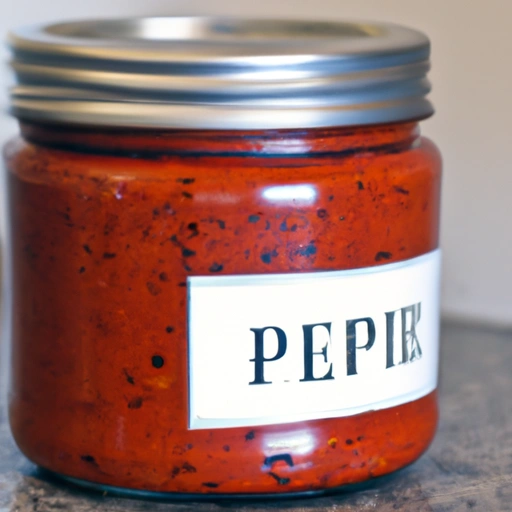Red Pepper Paste
Description

Red pepper paste is a savory, sometimes spicy, condiment that is made by grinding red peppers into a smooth paste. Often used in a variety of cuisines, it can add depth of flavor and a vivid splash of color to any dish. This versatile ingredient is known by different names around the world, such as 'gochujang' in Korean cuisine and 'ajvar' in Balkan countries.
Common uses
Red pepper paste is commonly used as a seasoning, condiment, or ingredient to enrich the flavor and color of various dishes. It can be found in marinades, dips, spreads, sauces, and soups.
Nutritional value
Calories
Average red pepper paste contains about 60 to 100 calories per 2 tablespoons (about 1.1 oz or 30g).
Protein
It provides approximately 2 to 3 grams of protein per serving.
Fat
Red pepper paste is relatively low in fat, with less than 1 gram per serving.
Carbohydrates
Carbohydrate content varies but is typically around 10 to 15 grams per serving.
Vitamins
It contains vitamins A and C, which come from the red peppers.
Minerals
Minerals such as potassium and magnesium can also be found in red pepper paste.
Health benefits
Red pepper paste is rich in antioxidants due to the presence of red peppers. These antioxidants can help in reducing inflammation and promoting heart health. The capsaicin in red peppers may also aid in metabolism and weight management.
Potential risks
For individuals with a sensitivity to spicy foods or nightshades, red pepper paste might cause digestive discomfort. It is also important to consider the sodium content in commercially prepared pastes.
Common recipes
It is used in dishes like Korean bibimbap, Turkish kebabs, and in the preparation of Balkan stews.
Cooking methods
Red pepper paste can be incorporated through stirring into soups, blending into sauces or used as a rub for meats and vegetables.
Pairing with other ingredients
It pairs well with proteins such as beef, chicken, and tofu, as well as with grains and legumes.
Summary
Red pepper paste is a flavorful ingredient with a rich cultural history, substantial nutritional value, and a broad range of culinary applications. It can offer health benefits but should be used in moderation due to potential risks.